How To Draw A Black Rose
Roses typically appear in fairy tales. Along with being beautiful and extravagant in appearance, they carry an image of treacherous harm to anyone who touches it. They have prickly thorns that are removed by florists when using the flower in bouquets.
In this tutorial, I will show you how to draw roses in various styles, focusing on how to express fluffy petals and other parts that bring out a "rose-like" look when drawn together, such as the thorns and leaves.
1. The Structure of a Rose
Even if you can draw a beautiful flower, you may find yourself wondering what the other parts like the stem, branches, and leaves look like underneath. First, let's briefly review the parts of a rose.
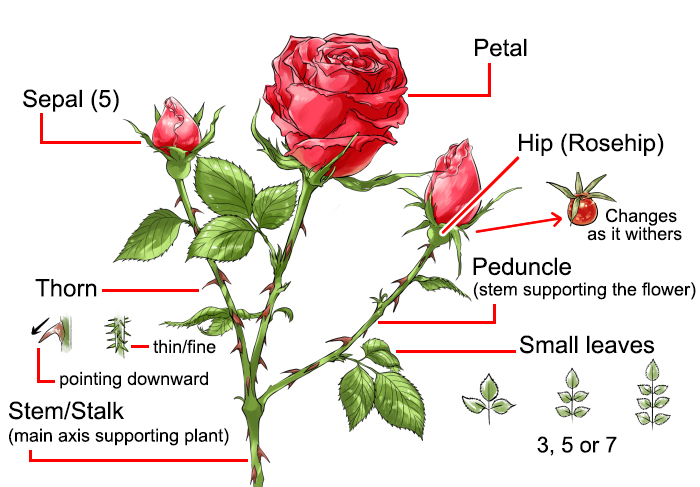
[Example image (arranged and simplified)]
2. How to draw the rose head
Now that you know the parts of a rose let's start drawing the petals. This time, I'm going to draw two roses from two different views, a bird's eye view from the top and one on an angle.
I divided the rose into the following three parts. Try to picture them as being in a differently shaped cups.
A. Inside B. Middle C. Outside
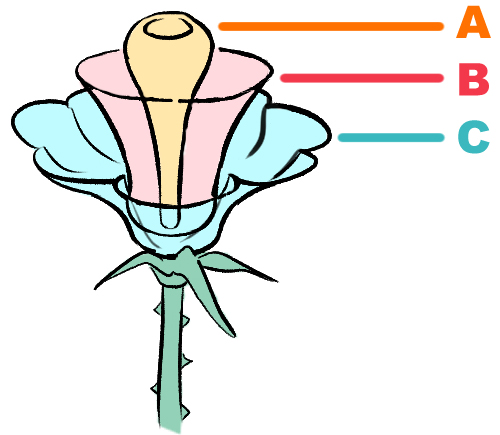
Sketching to understand the shape of a rose
You can easily draw roses by combining these three parts. Next, I'm going to draw a rough draft of the rose, as seen from above.
Drawing a rose from a bird's eye view
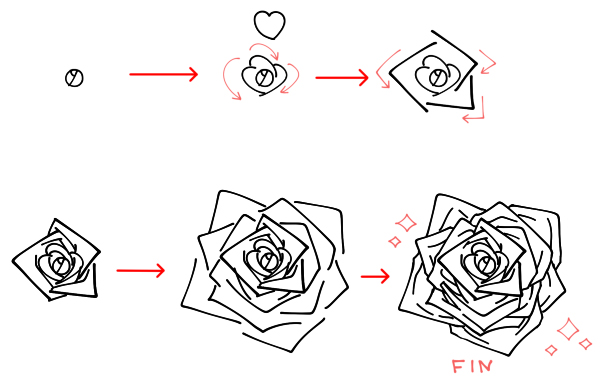
(1) Draw a circle for the center of the rose and then draw two lines to divide the circle into three parts. One line should be short and the other long like the letter Y.
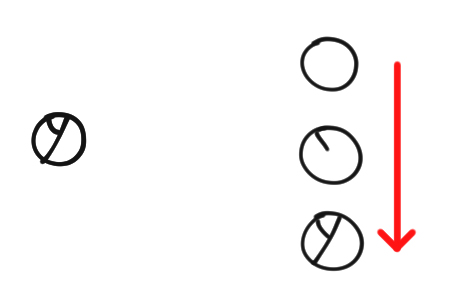
(2) Start drawing a heart from the top of the circle. Once you draw one side, draw the other like in the image below. By alternating strokes, you can express the overlapping of the petals. Part A is then completed by adding a wine-glass shape to the bottom.
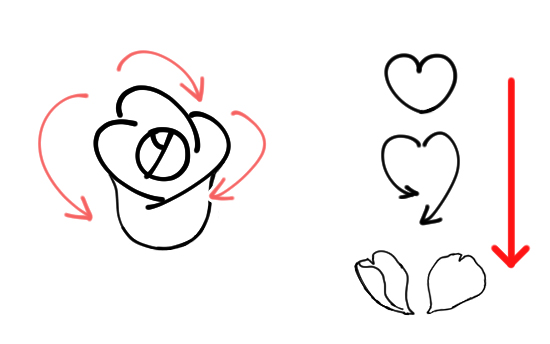
(3) Now, draw more angular lines in the shape of a circle around the bud than we did in the previous step. Stagger the start and endpoints so that they do not overlap.
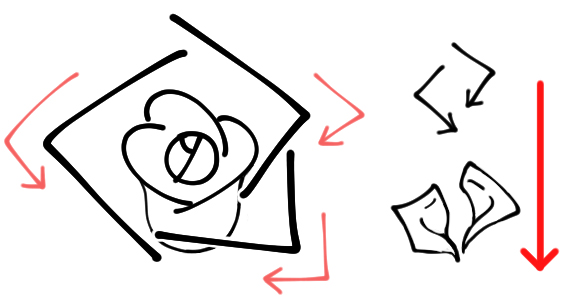
(4) Add edges to the petals drawn with hearts. By adding an edge, you can express the thickness, softness, and gorgeousness of the petals. As with part A., add a wine-glass shape to the bottom to complete part B.
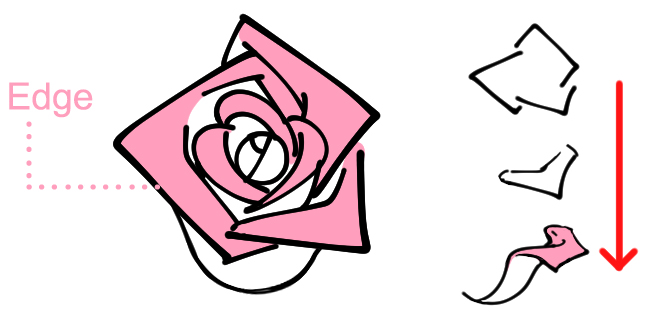
(5) By this point, the wine-glass shape of parts A and B is complete. Now we are going to draw the outer petals. Draw petals more dynamically than B. Imagine a triangle or a square as you draw. As before, make sure start and endpoints don't overlap and keep an eye on the overall balance as you draw. Draw the outer petals bigger to make the rose look even more gorgeous.
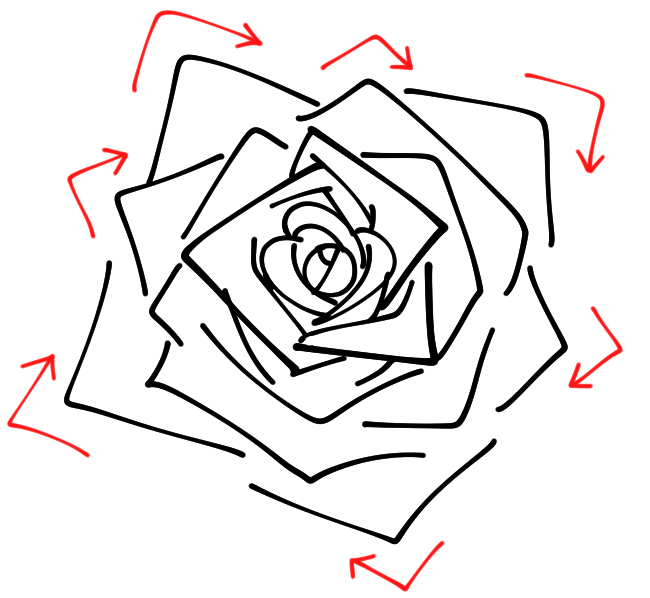
This completes our rose from a bird's eye view.
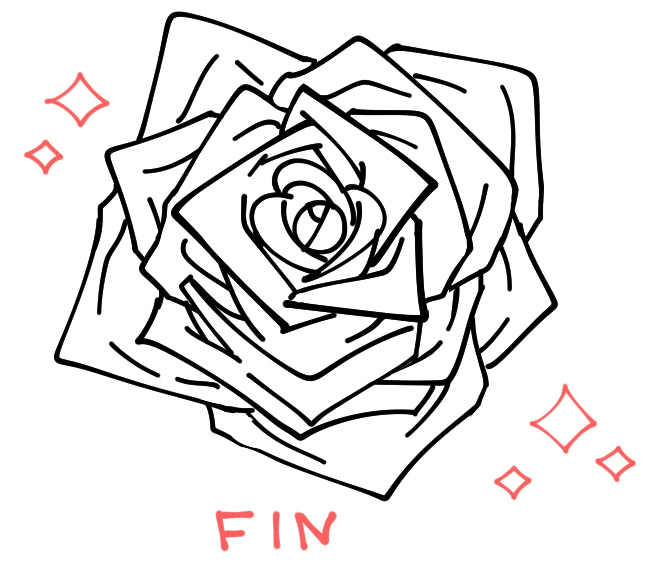
An Angled Rose
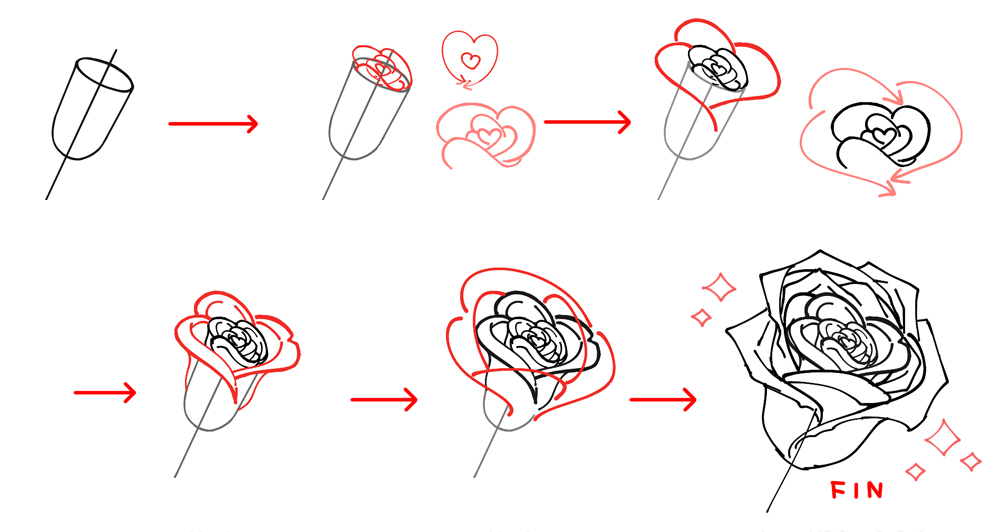
(1) Draw a centerline at the angle you want to draw the rose and then draw an ellipse. Finally, draw a wine-glass shape on the bottom of the ellipse.
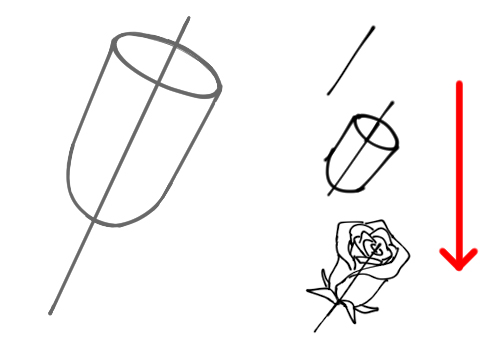
(2) Draw a heart in the ellipse.
Draw an open heart from the top of the circle. Now divide the heart in half and draw another side of a heart like in the image below. By alternating strokes, you can express the overlapping of the petals. Draw so that the inside of the ellipse is balanced and filled in. Part A is now complete.
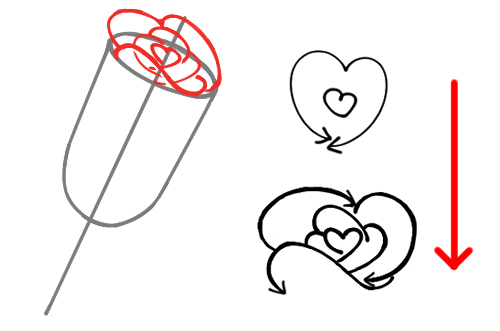
(3) Draw three large heart halves around the oval. Again, make sure that the starting and ending points do not overlap.
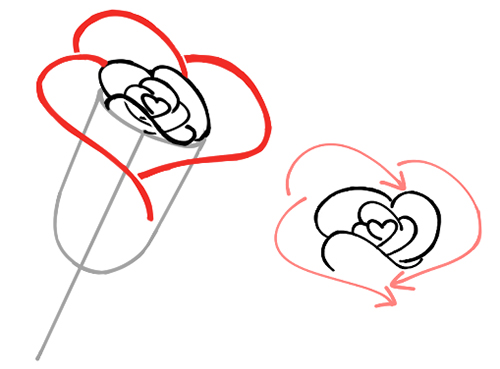
(4) Draw edges on the heart lines. By adding an edge, you can express the thickness, softness, and gorgeousness of the petals.
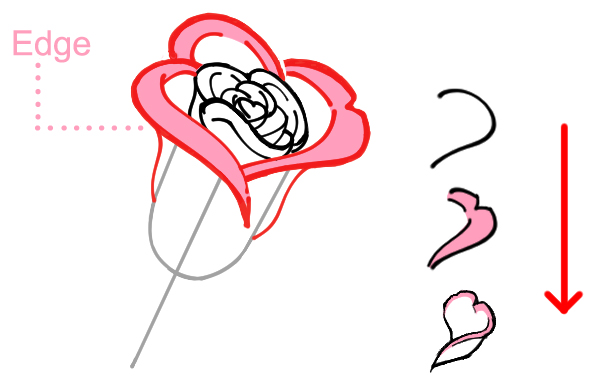
Part B is now complete.
(5) With parts A & B complete, we will now apply the petals to the outside of the flower. Draws these petals larger than in part B. Draw larger than B. Just as parts A and B are wrapped, draw your lines wrapping around the lines of the heart to create a three-dimensional effect. As before, make sure start and endpoints don't overlap and keep an eye on the overall balance as you draw. Draw the outer petals bigger to make the rose look even more gorgeous.
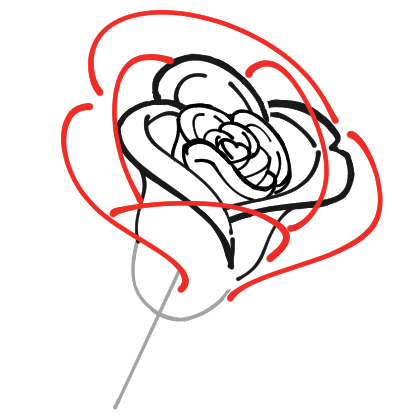
This completes our angled rose.
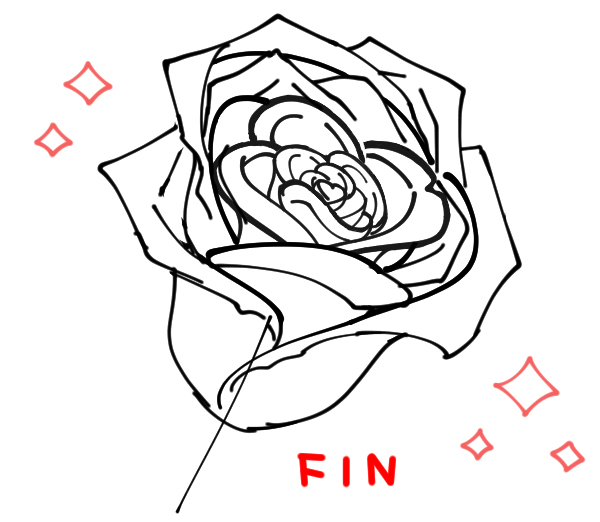
Are rose petals angular?
Depending on the type of rose, the petals differ. Some are pointed, and others are rounded. Furthermore, the thin, soft petals of a flower gradually curl up as while it's blooming. When using roses in illustrations, it is a good idea to choose a type that suits the situation. For example, to indicate that a long time has passed since the flower has bloomed, draw curled petals. For a sad, dark scene, use pointed petals, and for a happy scene such as a wedding, use dainty round petals.
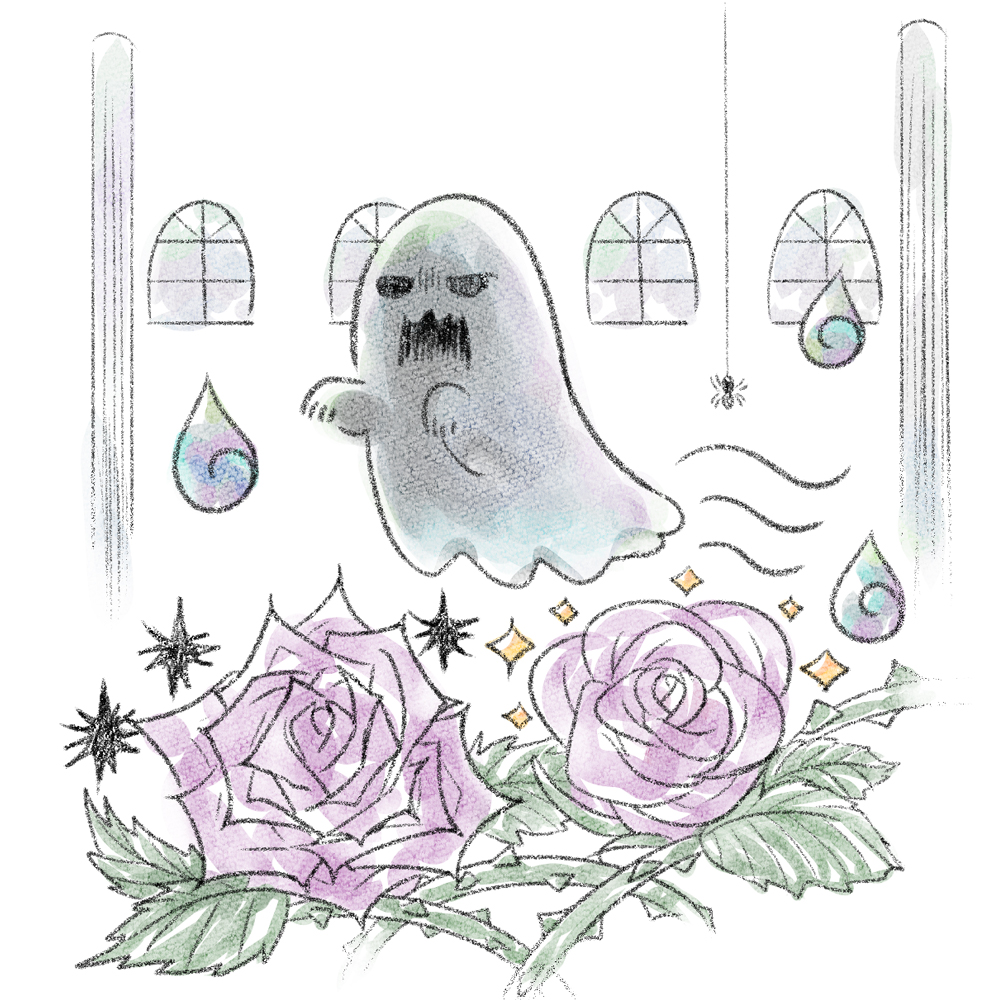
Inking
Now that we have explained that the petals of the rose are curled, it's time to start laying in our inked lines. Using a pen, I draw from the inside out, focusing on the image of the petals softly wrapped on the inside.
Inking tips
Line weight is very important when it comes to creating the softness of the petals. The petals of part A are drawn with thin lines to express a thin and delicate appearance.
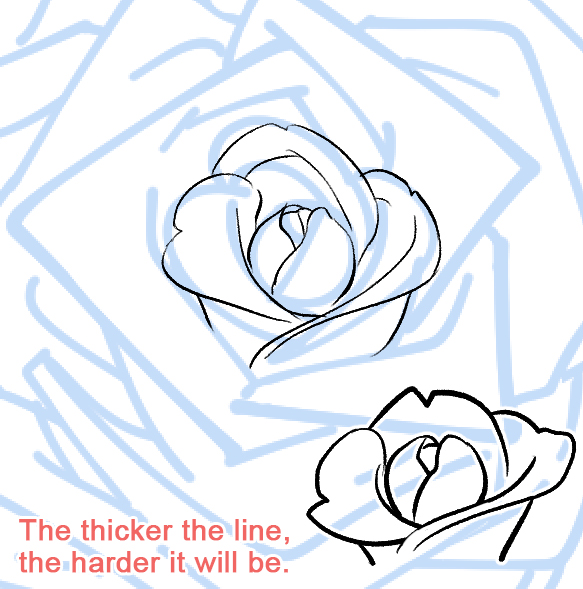
The petals of Part B are delicate yet energetic. The line should be heavy both at the bottom middle of the wine-shaped curve and at the top where it meets other lines. It should be thin between these places in the middle of the top curves. This makes the petals look more graceful.
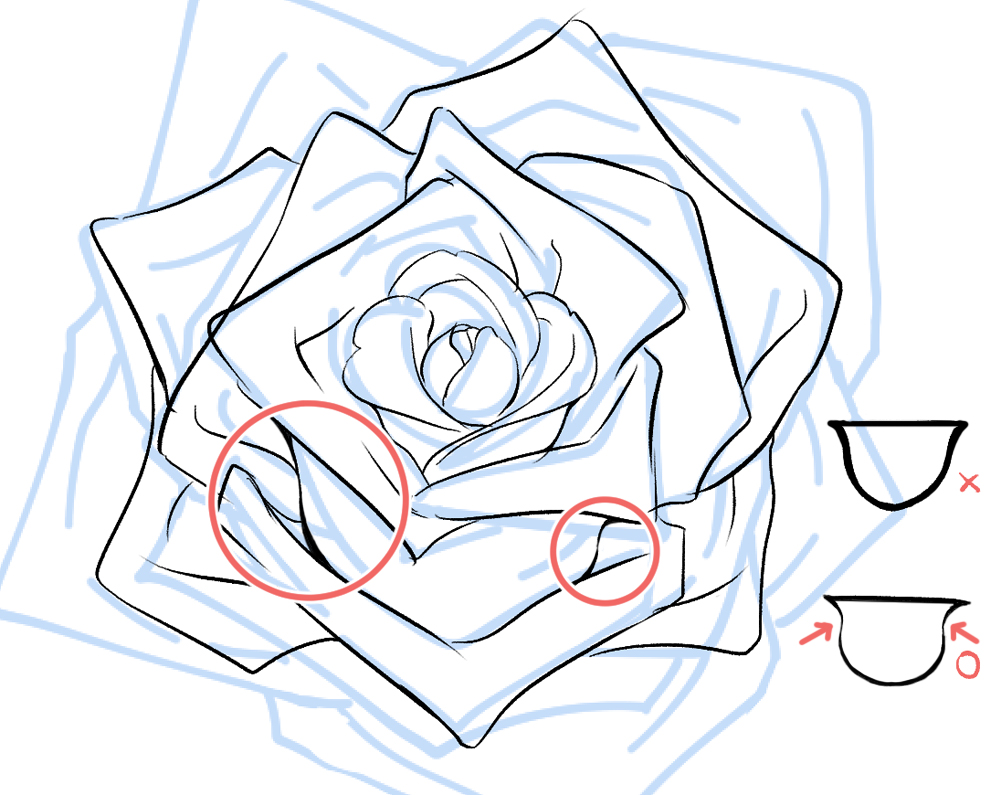
I drew the petals of part C like a fluffy jacket. You can be flexible and give some leeway here. The lines of the petals that are curved back should be sharper. The sharpness of your lines will vary depending on how well the petals have rolled back and how fresh it is, but it's not so sharp as to need a ruler.
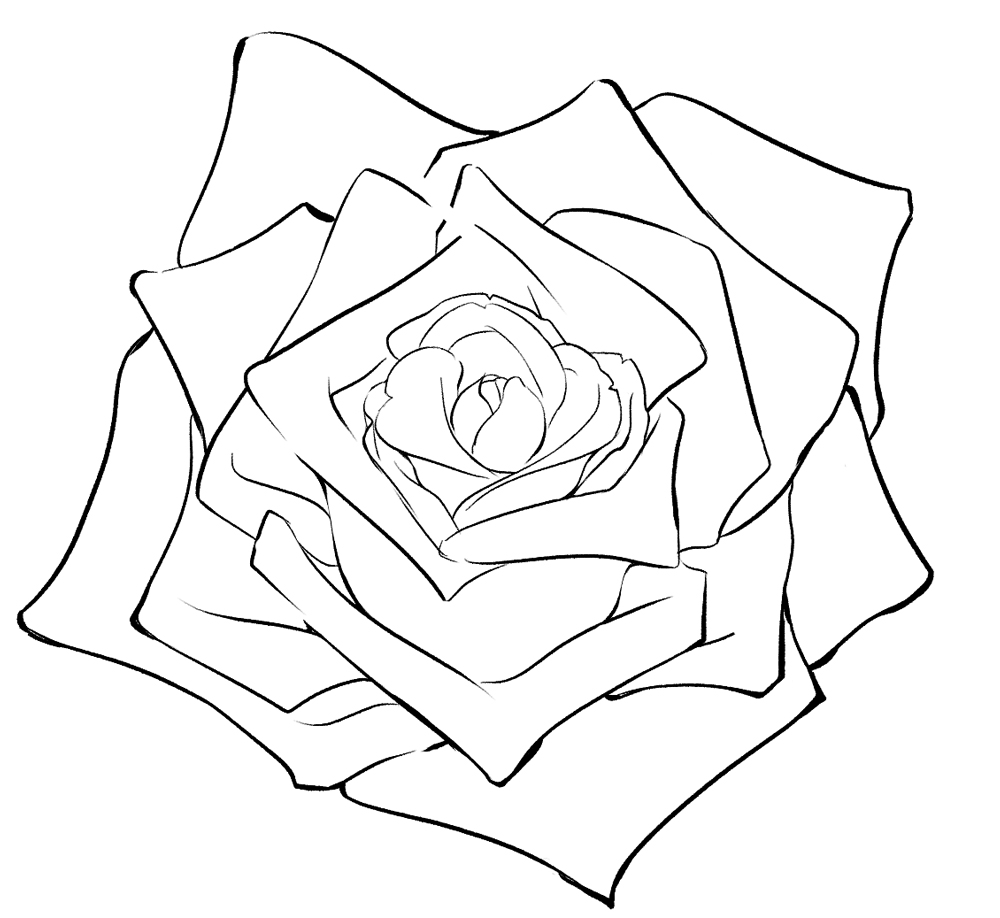
Finishing Touches
I hope you were able to draw a soft and fluffy line art. If your rose feels a little lacking… just add some more detail.
The petals that have rolled back from the left and right are raised on the outside but have a recess in the middle toward the center of the flower. If you add lines to show this difference in height, the flower becomes more three-dimensional.
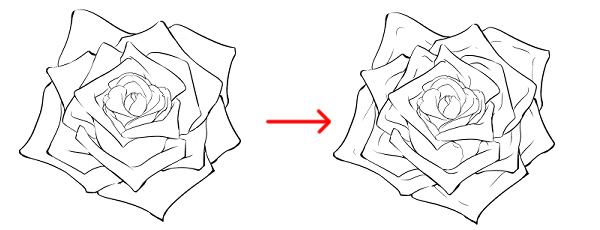
After this, shade in these and the areas that overlap, making the drawing pop out even more. In particular, if you add shade behind the wine-glass shape, it will really start to stand out.
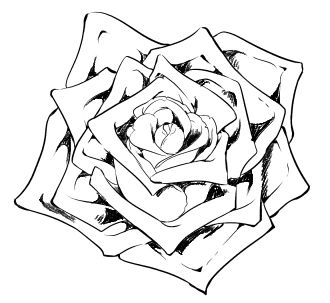
Note: For color illustrations, it may be better to avoid black-fill shading.
The inked rose is now complete. Feel free to play around and arrange petals into various combinations to find the rose you like best.
How to paint a rose
With the line art complete, it's time to add some color to our rose.
(1) Determine the light source (the direction the light is shining). I set the light source to hit from the top left.
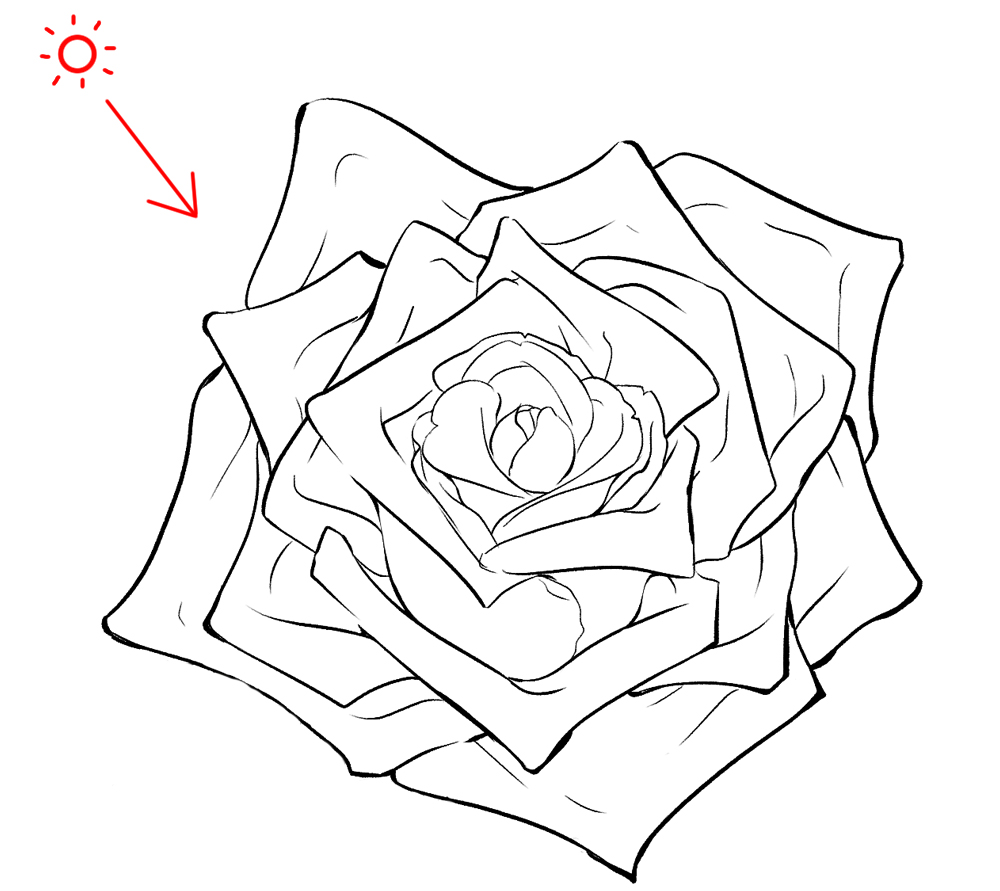
(2) Paint the first coat. Choosing a lighter color than what you envisioned will help the rose not look too heavy when you apply the shadows. For this part, I'll use [Gouache] in the [Brush] tool under [Thick paint].
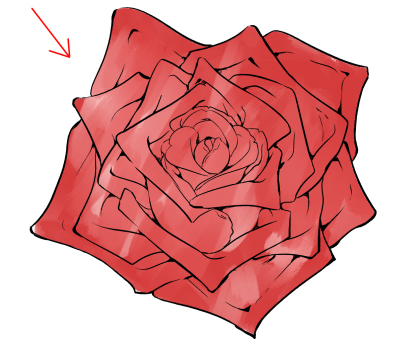
(3) I'll add the color for the shadows with the [Pen] tool > [G-pen]. Select a color a few shades darker than the first color we painted with. Lay in shadows where the light won't reach, such as the back of the wine-glass shape and dips in the petals.
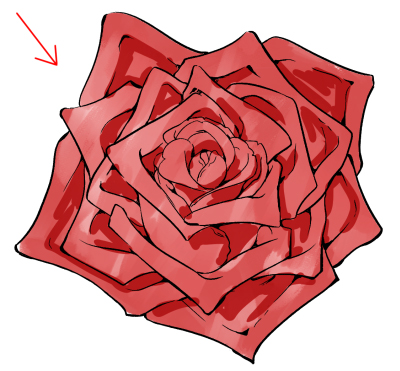
(4) Now we'll use the [Gouache] brush to blend the shadows.
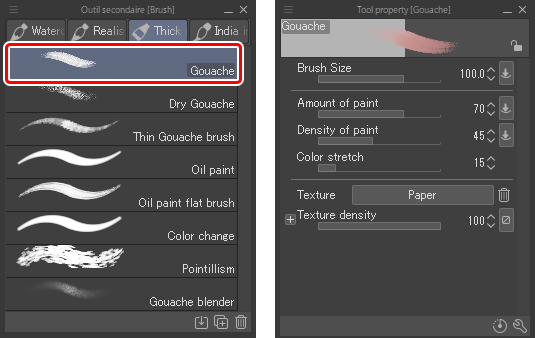
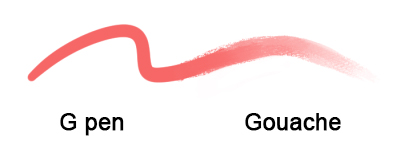
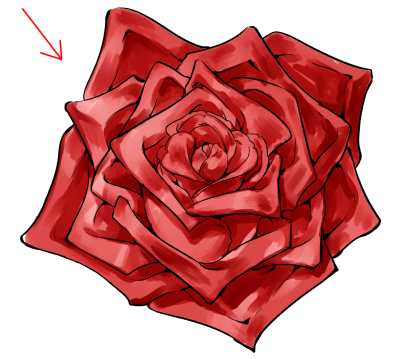
(5) Then, we'll use [G-pen] and [Gouache] to add highlights to the area where the light shines.
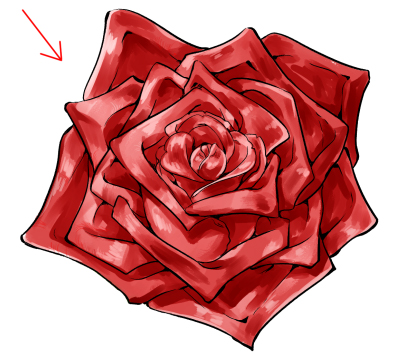
(6) Paint the stem and sepal in the same way, and adjust the overall image as needed. Painting shadows and highlights along the lines of the petals and leaves give it a more realistic look.
(7) All done! Our painted rose is now complete. Roses have complex overlapping petals, so keep this in mind when laying down your shadows.
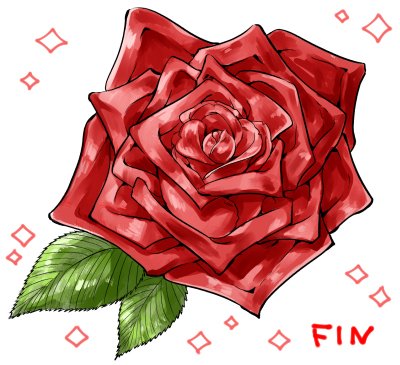
3. Simplified Rose
Sometimes you want to use a rose with a complex structure in terms of design. I will review two ways to go about this.
Draw a triangle
The first method uses a triangle to build up the rose.
(1) Draw two triangles for the center circle and then surround it with three more triangles. This will be the middle shape of the rose.

(2) Build around the middle shape with another layer of triangles. Think of it as a tiny circular mountain range.

(3) As the pile of triangles grows, you can increase the area of the petals by aligning the outline of the larger triangles with that of the inner pile of triangles.
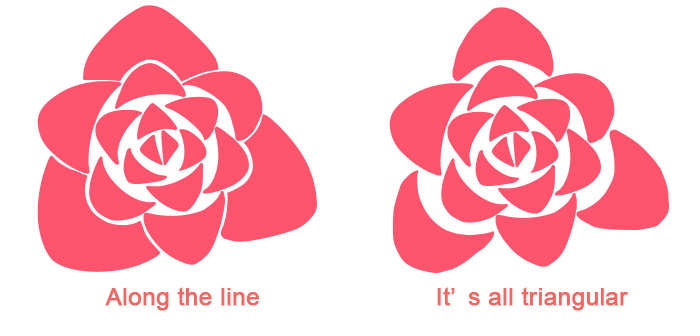
(4) Stop when you reach the desired size. If you draw leaves and ivy around it, it looks even more rose-like. Real rose leaves are jagged, but we'll remove them in this simplified version, so it's easy to draw them.
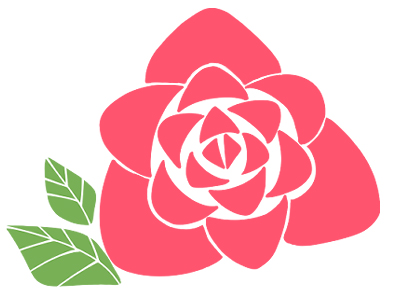
Layer soft brushstrokes
The second method is drawing soft petals attached to each other.
(1) Draw a squished ellipse and determine its center; alternatively, you can also draw a circle and divide it into three parts. The simpler, the better.
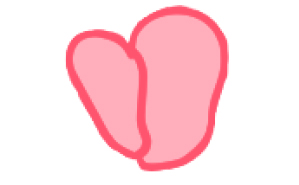
(2) Draw soft, rounded petals around the center of the flower. Draw petals in numbers of three or five to make it look more rose-like.
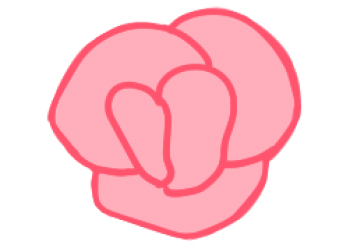
(3) Then add some simple leaves around it.
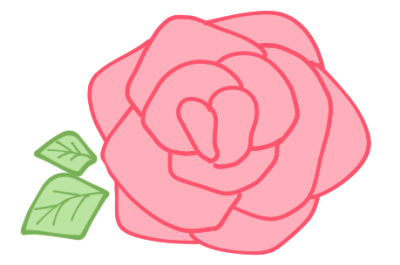
It really looks like a rose, right? Give this method a try for a little design work or for a hand-drawn touch. Adding variation to this simplified form gives a sense of realism and allows you to enjoy all kinds of rose shapes.

Final Comments
How was it? Roses are a complex flower, but by breaking it down into parts, it becomes much easier to draw. This is just one example of a rose. Other roses have different numbers of petals and frilly shapes, so let's draw all kinds of roses and discover your favorite!
How To Draw A Black Rose
Source: https://www.clipstudio.net/how-to-draw/archives/160287
Posted by: levineingle1968.blogspot.com

0 Response to "How To Draw A Black Rose"
Post a Comment